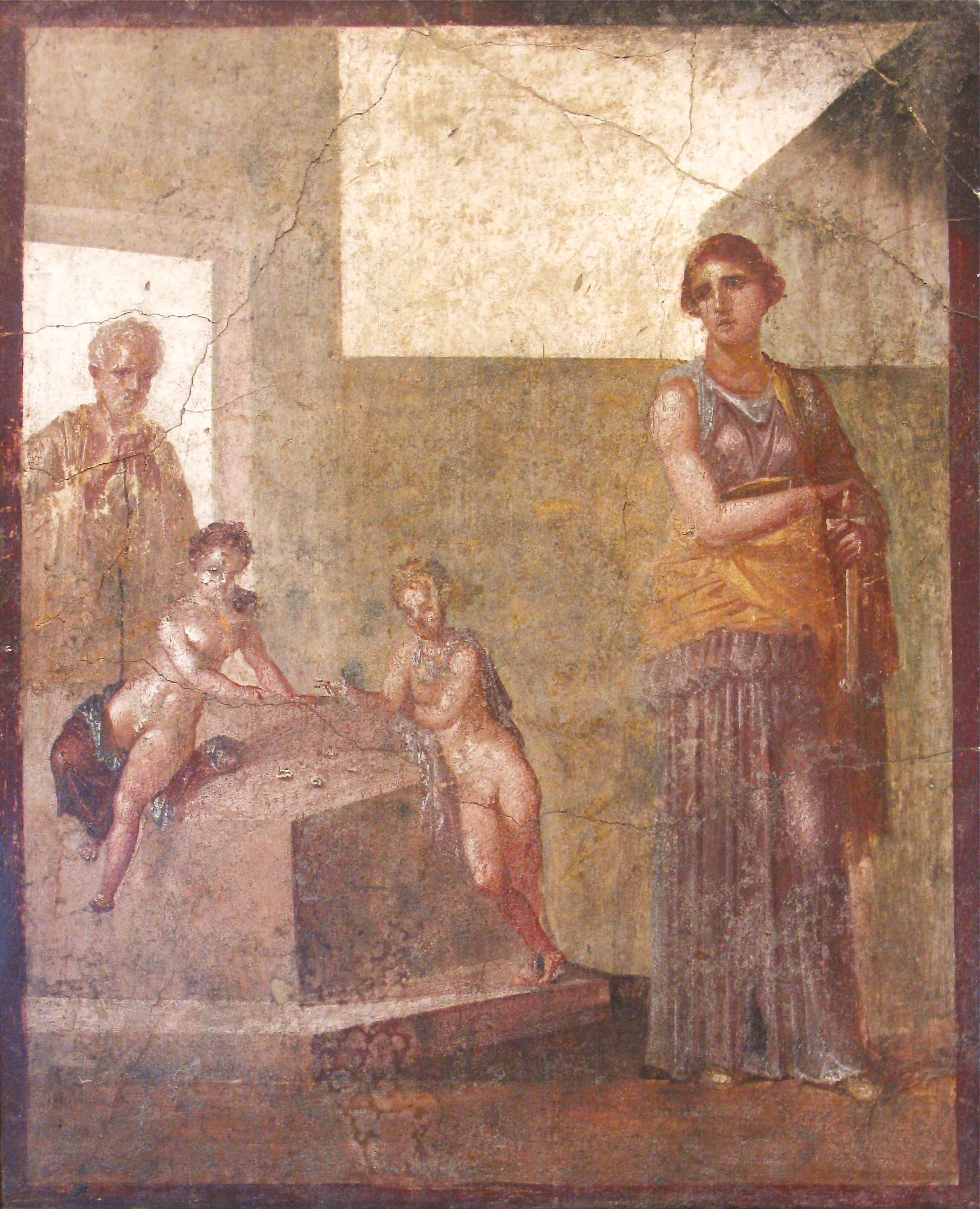Timomachus on:
[Wikipedia]
[Google]
[Amazon]
 Timomachus of Byzantium (or Timomachos, a transliteration of Τιμόμαχος) was an influential painter of the first century BCE.
Timomachus of Byzantium (or Timomachos, a transliteration of Τιμόμαχος) was an influential painter of the first century BCE.
Works
Pliny the Elder
Gaius Plinius Secundus (AD 23/2479), called Pliny the Elder (), was a Roman author, naturalist and natural philosopher, and naval and army commander of the early Roman Empire, and a friend of the emperor Vespasian. He wrote the encyclopedic '' ...
, in his ''Naturalis Historia
The ''Natural History'' ( la, Naturalis historia) is a work by Pliny the Elder. The largest single work to have survived from the Roman Empire to the modern day, the ''Natural History'' compiles information gleaned from other ancient authors. ...
'' (35.136), records that Julius Caesar
Gaius Julius Caesar (; ; 12 July 100 BC – 15 March 44 BC), was a Roman general and statesman. A member of the First Triumvirate, Caesar led the Roman armies in the Gallic Wars before defeating his political rival Pompey in a civil war, and ...
had acquired two paintings by Timomachus, one of ''Ajax
Ajax may refer to:
Greek mythology and tragedy
* Ajax the Great, a Greek mythological hero, son of King Telamon and Periboea
* Ajax the Lesser, a Greek mythological hero, son of Oileus, the king of Locris
* ''Ajax'' (play), by the ancient Greek ...
'' during his madness, and a ''Medea
In Greek mythology, Medea (; grc, Μήδεια, ''Mēdeia'', perhaps implying "planner / schemer") is the daughter of King Aeëtes of Colchis, a niece of Circe and the granddaughter of the sun god Helios. Medea figures in the myth of Jason an ...
'' meditating the slaying of her children, which cost him the considerable sum of 80 talents. Scholars have connected these works with the carrying away of a ''Medea'' and ''Ajax'' from Cyzicus
Cyzicus (; grc, Κύζικος ''Kúzikos''; ota, آیدینجق, ''Aydıncıḳ'') was an ancient Greek town in Mysia in Anatolia in the current Balıkesir Province of Turkey. It was located on the shoreward side of the present Kapıdağ Peni ...
, an ancient port of Anatolia
Anatolia, tr, Anadolu Yarımadası), and the Anatolian plateau, also known as Asia Minor, is a large peninsula in Western Asia and the westernmost protrusion of the Asian continent. It constitutes the major part of modern-day Turkey. The re ...
, mentioned in Cicero
Marcus Tullius Cicero ( ; ; 3 January 106 BC – 7 December 43 BC) was a Roman statesman, lawyer, scholar, philosopher, and academic skeptic, who tried to uphold optimate principles during the political crises that led to the estab ...
's ''In Verrem
"In Verrem" ("Against Verres") is a series of speeches made by Cicero in 70 BC, during the corruption and extortion trial of Gaius Verres, the former governor of Sicily. The speeches, which were concurrent with Cicero's election to the aedileship, ...
'' (2.4.135), and propose that Caesar acquired them there, shortly after his victory at Pharsalus
''Pharsalus''Melichar L (1906) ''Monographie der Issiden. (Homoptera). Abhandlungen der K. K. Zoologisch-botanischen Gesellschaft in Wien.'' Wien 3: 1-327 21 is the type genus of planthoppers in the subfamily Pharsalinae (family Ricaniidae); it ...
. The paintings, "a pair linked to each other by their rage", were installed in front of the Temple of Venus Genetrix
The Temple of Venus Genetrix (Latin: ''Templum Veneris Genetricis'') is a ruined temple in the Forum of Caesar, Rome, dedicated to the Roman goddess '' Venus Genetrix'', the founding goddess of the Julian gens. It was dedicated to the goddess on ...
, and remained there until their destruction by fire in 80 CE.
The '' Anthology of Planudes'' preserves a number of epigram
An epigram is a brief, interesting, memorable, and sometimes surprising or satirical statement. The word is derived from the Greek "inscription" from "to write on, to inscribe", and the literary device has been employed for over two mille ...
s on the ''Medea'', which note its incomplete state, and praise its emotional intensity and verisimilitude
In philosophy, verisimilitude (or truthlikeness) is the notion that some propositions are closer to being true than other propositions. The problem of verisimilitude is the problem of articulating what it takes for one false theory to be closer ...
. Scholars believe that two well-known depictions of Medea preserved at Pompeii
Pompeii (, ) was an ancient city located in what is now the ''comune'' of Pompei near Naples in the Campania region of Italy. Pompeii, along with Herculaneum and many villas in the surrounding area (e.g. at Boscoreale, Stabiae), was buried ...
were composed under the influence of Timomachus' work.
References
Ancient Greek painters 1st-century BC Greek people 1st-century BC painters {{AncientGreece-bio-stub